JUDGMENT OF THE GENERAL COURT (Third Chamber)
18 November 2015 (*)
(Community design — Invalidity proceedings — Registered Community design representing a case for a portable computer — Identical earlier designs — Ground for invalidity — Lack of novelty within the meaning of Article 5(1) of Regulation (EC) No 6/2002 — Disclosure of earlier designs prior to the priority date — Article 7(1) and (2) of Regulation No 6/2002)
In Case T‑813/14,
Min Liu, residing in Guangzhou (China), represented initially by R. Bailly, S. Zhang and Y. Zhang, and subsequently by Y. Zhang, lawyers,
applicant,
v
Office for Harmonisation in the Internal Market (Trade Marks and Designs) (OHIM), represented by A. Folliard-Monguiral, acting as Agent,
defendant,
the other party to the proceedings before the Board of Appeal of OHIM being
DSN Marketing Ltd, established in Crawley (United Kingdom),
ACTION brought against the decision of the Third Board of Appeal of OHIM of 7 October 2014 (Case R 1864/2013-3), relating to invalidity proceedings between DSN Marketing Ltd and Mr Min Liu,
THE GENERAL COURT (Third Chamber),
composed of S. Papasavvas (Rapporteur), President, F. Dehousse and E. Bieliūnas, Judges,
Registrar: S. Bukšek Tomac, Administrator,
having regard to the application lodged at the Court Registry on 16 December 2014,
having regard to the response lodged at the Court Registry on 17 March 2015,
having regard to the decision of 9 June 2015 refusing to allow a reply to be lodged,
having regard to the designation of another Judge to complete the Chamber after one of its Members was prevented from acting,
further to the hearing on 3 September 2015,
gives the following
Judgment
Background to the dispute
1 On 21 May 2012, the applicant, Mr Min Liu, filed an application for registration of a Community design with the Office for Harmonisation in the Internal Market (Trade Marks and Designs) (OHIM) pursuant to Council Regulation (EC) No 6/2002 of 12 December 2001 on Community designs (OJ 2002 L 3, p. 1).
2 The design in respect of which registration was sought is represented as follows:
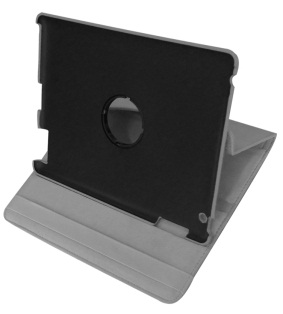

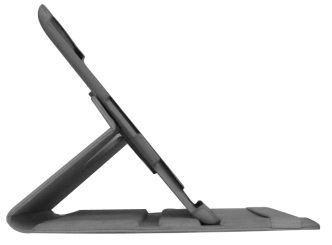
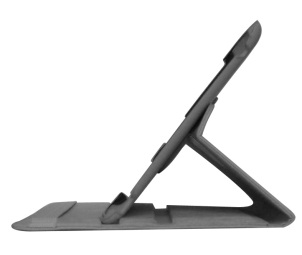

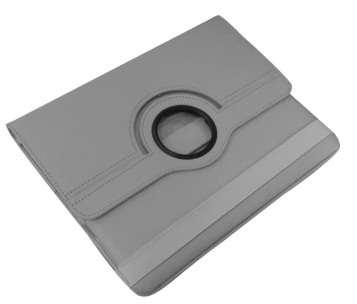
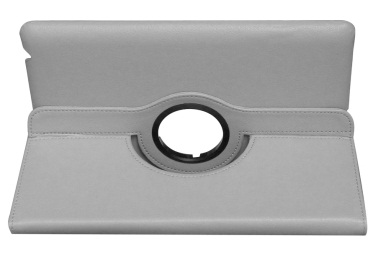
3 The contested design was registered under Number 002044180-0001 on the day on which the application for registration was filed and was published in Community Designs Bulletin No 2012/120 of 26 June 2012, with a date of priority of 8 February 2012. It is intended to be applied to ‘cases for portable computers’ in Class 03-01 of the Locarno Agreement Establishing an International Classification for Industrial Designs of 8 October 1968, as amended.
4 On 9 August 2012, DSN Marketing Ltd submitted to OHIM an application for a declaration of invalidity of the contested design, pursuant to Article 25(1)(b) of Regulation N° 6/2002. In its application for a declaration of invalidity, DSN Marketing claimed that the contested design was not new within the meaning of Article 5 of that regulation and relied on three documents in support of its contentions:
– a copy of an offer by Targus on the Amazon.co.uk website (‘document D1’) of a ‘Targus rotating case for iPad 2-black’ (‘Targus design’). The offer indicates that it was first made available on the Amazon.co.uk website on 4 February 2011;
– a copy of an offer bearing ASIN No B004R24ASK by Duragadget on the Amazon.co.uk website of a ‘Duragadget 360 degree rotating faux leather case for the apple iPad 2- Featuring magnetic sleep/wake function’ (‘the Duragadget design’). The offer indicates that it was first made available on the Amazon.co.uk website on 8 March 2011;
– undated copies of Internet offers for rotating cases.
5 By decision of 30 July 2013, the Invalidity Division declared the contested design invalid for lack of novelty and ordered the applicant to pay the costs.
6 On 23 September 2013 the applicant filed a notice of appeal with OHIM, pursuant to Articles 55 to 60 of Regulation No 6/2002, against the decision of the Invalidity Division.
7 By decision of 7 October 2014 (‘the contested decision’), the Third Board of Appeal of OHIM dismissed the appeal and ordered the applicant to pay the costs. It took the view, essentially, that the Targus design, identical to the contested design, had been disclosed before the date of priority of 8 February 2012 and that the Invalidity Division had therefore rightly declared the contested design invalid for lack of novelty.
Forms of order sought
8 The applicant claims that the Court should:
– annul the contested decision;
– order OHIM to pay the costs and order the recovery of costs incurred.
9 During the hearing, the applicant also claimed that, were the contested decision to be annulled, the Court should:
– dismiss the application for a declaration of invalidity brought by DSN Marketing;
– refer the case back to the Third Board of Appeal of OHIM, if it is not ready for judgment.
10 OHIM contends that the Court should:
– dismiss the application;
– order the applicant to pay the costs.
Law
11 In support of his action, the applicant puts forward, in essence, three pleas in law, alleging (i) infringement of the obligation to state reasons and breach of Article 62 of Regulation No 6/2002; (ii) incorrect assessment of certain evidence; and (iii) breach of Article 7(2) of that regulation.
12 In the present case, the Court considers it appropriate to deal with the third plea in law before the second.
The first plea in law: infringement of the obligation to state reasons and breach of Article 62 of Regulation No 6/2002
13 The applicant submits that the Board of Appeal did not respond to his argument that the disclosures of the Targus and Duragadget designs could not affect the novelty of the contested design because they amounted to disclosures made by a third party on the basis of information provided or action taken by the designer within the meaning of Article 7(2) of Regulation No 6/2002. From this he concludes that the contested decision is inadequately reasoned on that point and breaches Article 62 of Regulation No 6/2002.
14 OHIM contests that argument.
15 In that regard, it must be recalled that, in accordance with Article 62 of Regulation No 6/2002, decisions of OHIM must be reasoned. That obligation to state reasons has the same scope as that under Article 296 TFEU, pursuant to which the reasoning of the author of the act must be shown clearly and unequivocally, and its purpose is twofold: first, to enable the persons concerned to ascertain the reasons for the measure taken in order to defend their rights and, second, to enable the European Union Courts to exercise their power to review the legality of the decision. The Boards of Appeal cannot, however, be required to provide an account that follows exhaustively and one by one all the lines of reasoning articulated by the parties before them. The reasoning may therefore be implicit, on condition that it enables the persons concerned to know the reasons for the Board of Appeal’s decision and provides the competent Court with sufficient material for it to exercise its power of review (see judgment of 25 April 2013 in Bell & Ross v OHIM — KIN (Wristwatch case), T‑80/10, EU:T:2013:214, paragraph 37 and the case-law cited).
16 In the present case, it is apparent from paragraphs 35 and 36 of the contested decision that the Board of Appeal took the view that the applicant had not proved that he had created the contested design. In doing so, the Board of Appeal admittedly did not provide an account that follows exhaustively and one by one the stages of the reasoning set out by the applicant, but it did implicitly, as is allowed by the case-law mentioned in the preceding paragraph, take the view that the disclosures of the Targus and Duragadget designs could not be treated as disclosures made by a third party as a result of information provided or action taken by the designer, within the meaning of Article 7(2) of Regulation No 6/2002. Accordingly, the contested decision is sufficiently reasoned on this point and does not breach Article 62 of that regulation.
17 In those circumstances, the first plea in law must be rejected.
The third plea in law: breach of Article 7(2) of Regulation No 6/2002
18 The applicant contends, essentially, that the disclosures of the Targus and Duragadget designs could not affect the novelty of the contested design because they amounted to disclosures made by a third party on the basis of information provided or action taken by the designer within the meaning of Article 7(2) of Regulation No 6/2002.
19 OHIM contests that argument.
20 According to Article 5(1)(b) of Regulation No 6/2002, a design is considered to be new if no identical design has been made available to the public, in the case of a registered Community design, before the date of priority. Article 7(1) of that regulation specifies that, for the purpose of applying, inter alia, Article 5, a design is to be deemed to have been made available to the public if it has been published following registration or otherwise, or exhibited, used in trade or otherwise disclosed, before the date referred to in Article 5(1)(b), except where these events could not reasonably have become known in the normal course of business to the circles specialised in the sector concerned, operating within the European Union. Finally, Article 7(2) of that regulation provides that a disclosure is not to be taken into consideration if a design for which protection is claimed under a registered Community design has been made available to the public by a third person as a result of information provided or action taken by the designer during the 12-month period preceding the date of priority, if a priority is claimed.
21 It is apparent from the case-law that the objective of Article 7(2) of Regulation No 6/2002 is to offer a creator or his successor in title the opportunity to market a design, for a period of 12 months, before having to proceed with the formalities of filing (judgment of 14 June 2011 in Sphere Time v OHIM — Punch (Watch attached to a lanyard), T‑68/10, ECR, EU:T:2011:269, paragraph 24).
22 Accordingly, during this period, the creator or his successor in title can ascertain that the design concerned is a commercial success before incurring the costs relating to registration, without fear that the disclosure that takes place at that time may be successfully raised during any invalidity proceedings brought after the possible registration of the design concerned (judgment in Watch attached to a lanyard, paragraph 21 above, EU:T:2011:269, paragraph 25).
23 Therefore, for Article 7(2) of Regulation No 6/2002 to be applicable in the context of invalidity proceedings, the owner of the design that is the subject of the application for invalidity must establish that it is either the creator of the design upon which that application is based or the successor in title to that creator (judgment in Watch attached to a lanyard, paragraph 21 above, EU:T:2011:269, paragraph 26).
24 In the present case, the Board of Appeal held that the evidence submitted by the applicant was not sufficient to prove that he is the creator of the contested design.
25 In his written pleadings, the applicant claims that it has been proven that he is indeed the creator of the contested design. In support of his contentions, he refers to two items of proof: first, AutoCAD designs (computer-aided designs) and, second, an affidavit.
26 In that regard, it must be recalled that, according to settled case-law, in order to assess the probative value of a document, it is necessary to check the plausibility and truthfulness of the information which it contains. In that regard, account must be taken of, inter alia, the origin of the document, the circumstances of its preparation and to whom it is addressed, and whether it seems from the content to be sensible and reliable (see judgment of 15 December 2005 in BIC v OHIM (Shape of a lighter), T‑262/04, ECR, EU:T:2005:463, paragraph 78 and the case-law cited).
27 In the first place, with regard to the AutoCAD designs, the Board of Appeal took the view that any person with average computer skills could change the time and date settings of a computer and therefore save a file containing AutoCAD designs with a date chosen at will. Furthermore, the Board of Appeal pointed out that the applicant had not explained why he had waited, first, until 10 February 2011 to test a design that he claimed to have created on 2 February 2010, and, second, until 13 February 2011 to commission a designer to design the packaging of that design, although the first sales had already taken place. In addition, the Board of Appeal stated that the applicant had submitted the correspondence between himself and Targus, in which the latter claims that its design was created by a design team consisting of several of its employees and a design consultant during the second half of 2010, with the product being made available on the European market in March 2011. In that context, the Board of Appeal took the view that it seemed highly unlikely that the applicant had required slightly over 18 minutes to create the contested design, as was stated in the file containing the AutoCAD designs submitted by him. The applicant has merely stated before the Court, without adducing evidence capable of proving it, that the process of the creation of the contested design had started in August 2009 and that the 12-month period between the date of creation of this design and the first sales of rotating cases corresponding to the contested design is attributable to, in particular, the manufacture of several samples and the conducting of several series of tests. He has also stated that nothing proves that the date of the AutoCAD designs was modified, without disputing the Board of Appeal’s assessment that such a modification could have been made by any person with average computer skills. Furthermore, he has not challenged any of the other evidence admitted by the Board of Appeal although it is of such a kind as to cast a doubt over the plausibility and truthfulness of the information contained in those designs.
28 In the second place, with regard to the applicant’s affidavit, it is clear that the Board of Appeal did not take account of it. In his written pleadings, the applicant contends that such an affidavit is, however, capable of corroborating the accuracy of the other documents submitted.
29 In this regard, it must be pointed out that the particulars in an affidavit made by a person linked, in any manner whatsoever, to the company relying on it must, in any event, be supported by other evidence (see judgment of 11 December 2014 in Nanu-Nana Joachim Hoepp v OHIM — Vincci Hoteles (NAMMU), T‑498/13, EU:T:2014:1065, paragraph 38 and the case-law cited). It is, however, clear, as follows from paragraph 27 above, that the applicant has not demonstrated that the Board of Appeal erred in taking the view that the AutoCAD designs created by the applicant did not make it possible to establish that he was the genuine creator of the contested design and, consequently, to corroborate the content of that affidavit.
30 It follows from the foregoing that the Board of Appeal was fully entitled to take the view that the applicant had not proved that he is the creator of the contested design. Therefore, he is not justified in relying on the provisions of Article 7(2) of Regulation No 6/2002 and, consequently, in claiming that the disclosure of the Targus and Duragadget designs for a period of 12 months preceding the date of priority did not place in question the novelty of the contested design.
31 It follows that the third plea in law must be rejected.
The second plea in law: incorrect assessment of certain evidence
32 This plea in law is divided into two parts, the first of which relates to the lack of probative value of the evidence on which the Board of Appeal relied in concluding that the Targus design had first been disclosed on 4 February 2011 and the second of which relates to the alleged unequal treatment of the evidence submitted by the applicant and DSN Marketing to the Board of Appeal.
The first part, alleging lack of probative value of the evidence on which the Board of Appeal based its conclusion that the Targus design had been disclosed for the first time on 4 February 2011
33 The applicant argues, essentially, that the evidence on which the Board of Appeal based its decision, in particular the document D1, did not support the conclusion that the Targus design had been disclosed for the first time on 4 February 2011, that is to say, prior to 8 February 2011, and thus prior to the 12-month period preceding the date of priority mentioned in Article 7(2) of Regulation No 6/2002.
34 OHIM contests that argument.
35 In the present case, it is apparent from the contested decision that the Board of Appeal took the view that, since the parties did not dispute the fact that the Targus design had been disclosed, within the meaning of Article 7(1) of Regulation No 6/2002, on 21 March 2011, and thus on a date preceding the date of priority mentioned in paragraph 3 above, it was not necessary to examine whether document D1 proved that that design had been disclosed on 4 February 2011. The applicant replies that, pursuant to the provisions of Article 7(2) of that regulation, only a disclosure on 4 February 2011 was capable of affecting the novelty of the contested design. In that regard, suffice it to recall that, as stated in paragraph 30 above, the exemption provided for in Article 7(2) of Regulation No 6/2002 was not applicable in the present case. Therefore, disclosure of the Targus design on 21 March 2011 could, as the Board of Appeal correctly held, have affected the novelty of the contested design. Accordingly, the argument by which the applicant seeks to establish the lack of probative value of document D1, which mentions the date of first disclosure of the Targus design as being 4 February 2011, is of no consequence since that date was used by the Board of Appeal solely as a contextual element.
36 In those circumstances, and since the applicant has not raised any ground of challenge seeking to call into question the lack of probative value of the evidence establishing that the date of the first disclosure of the Targus design is 21 March 2011, the first part of the second plea in law must be rejected.
The second part, alleging that the evidence submitted before the Board of Appeal by the applicant and DSN Marketing was not treated equally
37 The applicant submits that the Board of Appeal did not treat equally the evidence submitted to it.
38 OHIM contests that argument.
39 In that regard, it should be noted that the applicant merely contends that the Board of Appeal, first, simply found as a fact, in order to set aside this item of evidence, that it is possible to amend the date of a file containing AutoCAD designs, without checking that this had actually been the case here, and, second, did not take into account the affidavit that he had submitted, even though such an affidavit would have made it possible to corroborate the items contained in the abovementioned file. However, the applicant does not develop any argument capable of proving that the Board of Appeal treated evidence submitted by the parties unequally. In any event, if, on a reading of the whole of the application, the applicant can be regarded as alleging, essentially, that the Board of Appeal had rebutted the probative value of the AutoCAD designs which he had submitted on the ground that the date and time that they mention could not be regarded as certain, whereas the Board of Appeal took the view that, on the basis of photos published on the Amazon.co.uk website and taken on a date and at a time which could not be established with any greater certainty, DSN Marketing had proved sufficiently the date of the first disclosure of the Targus design, it must be held that such an argument has to be rejected. As mentioned in paragraph 27 above, the Board of Appeal rejected the probative nature of the AutoCAD designs by basing itself on several items, one of which is the creation of the file containing those designs in little more than 18 minutes, a matter which the applicant does not dispute. Therefore, the second part of the second plea in law, and accordingly, the second plea in law in its entirety, must be rejected.
40 Finally, with regard to the ground of challenge, raised for the first time during the hearing, by which the applicant complains that the Board of Appeal infringed the right to a fair trial, on the ground that it had questioned the probative value of certain items of evidence submitted to it without allowing the applicant to put forward his observations, it must be noted, firstly, that the Court has excluded the possibility of relying on a right to a fair ‘hearing’ in proceedings before the Boards of Appeal of OHIM, since proceedings before the Boards of Appeal are administrative, not judicial, in nature (see judgment of 12 September 2012 in Duscholux Ibérica v OHIM — Duschprodukter i Skandinavien (duschy), T‑295/11, EU:T:2012:420, paragraph 21 and the case-law cited). Secondly, although the right to be heard, as laid down by the second sentence of Article 75 of Regulation No 207/2009, covers all the factual and legal evidence which forms the basis for making the decision, it does not apply to the final position which the administration intends to adopt (judgment in duschy, cited above, EU:T:2012:420, paragraph 25). Accordingly, that ground of challenge must be rejected as being manifestly unfounded, without it being necessary to rule on its admissibility.
41 It follows from the foregoing that the action must be dismissed in its entirety, without the need to adjudicate on the heads of claim submitted for the first time by the applicant during the hearing and referred to in paragraph 9 above, even on the assumption that these are admissible.
Costs
42 Under Article 134(1) of the Rules of Procedure of the General Court, the unsuccessful party is to be ordered to pay the costs if they have been applied for in the successful party’s pleadings.
43 Since the applicant has been unsuccessful, he must be ordered to pay the costs, in accordance with the form of order sought by OHIM, and his head of claim seeking recovery of the costs incurred must be rejected.
On those grounds,
THE GENERAL COURT (Third Chamber)
hereby:
1. Dismisses the action;
2. Orders Mr Min Liu to pay the costs.
Papasavvas | Dehousse | Bieliūnas |
Delivered in open court in Luxembourg on 18 November 2015.
[Signatures]